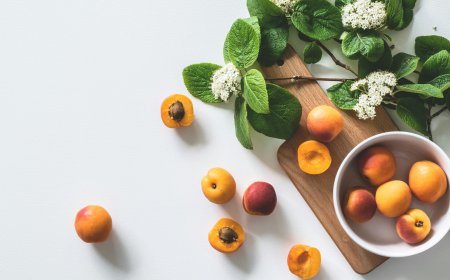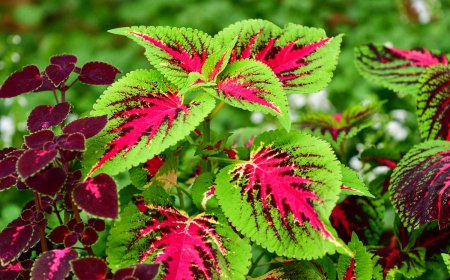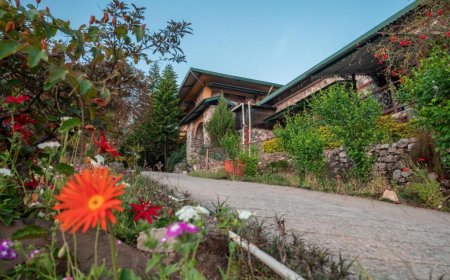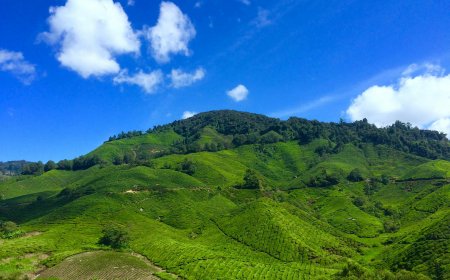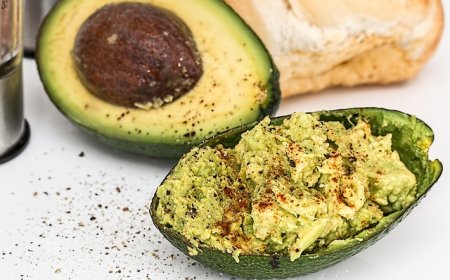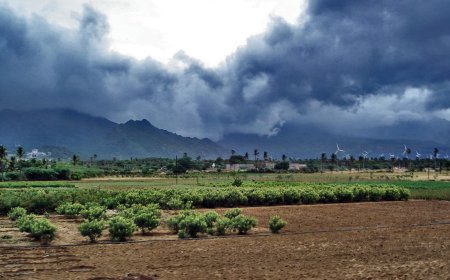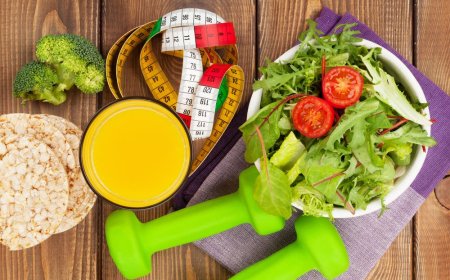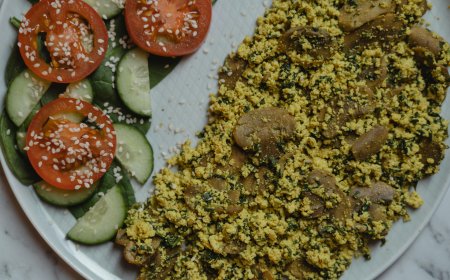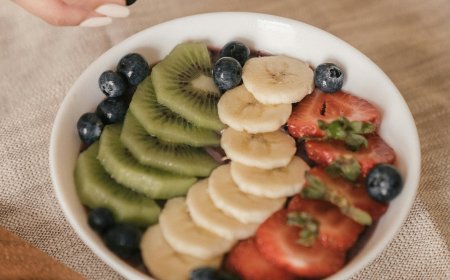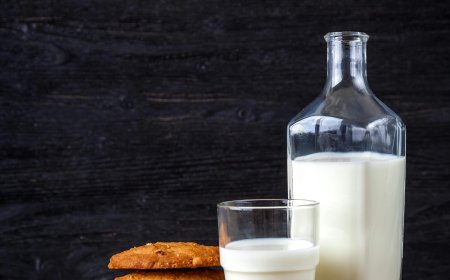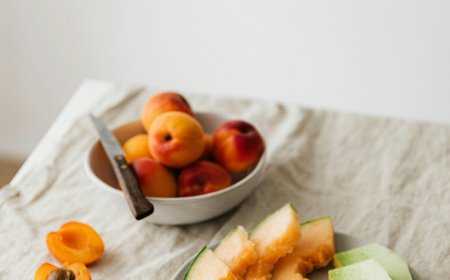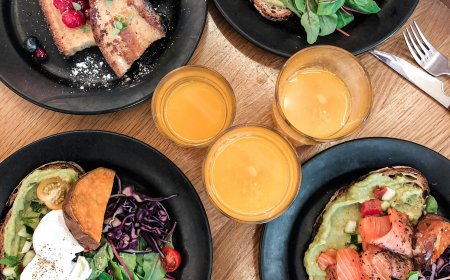The Top 9 Blue Zone Foods for a Longer Life
National Geographic author Dan Buettner coined the phrase “Blue Zones” after setting out to find places in the world where populations lived the longest, with the highest quality of life. His findings were compiled in the book Blue Zones, where he reveals five places with the world’s oldest populations and their healthy lifestyle habits. The […]

National Geographic author Dan Buettner coined the phrase “Blue Zones” after setting out to find places in the world where populations lived the longest, with the highest quality of life.
His findings were compiled in the book Blue Zones, where he reveals five places with the world’s oldest populations and their healthy lifestyle habits.
The five blue zones are:
- Okinawa, Japan
- Ikaria, Greece
- Sardinia, Italy
- Loma Linda, California (an Adventist community)
- Nicoya, Costa Rica
People in Blue Zones live to be 100 at ten times the average rate! While Buettner’s research includes these populations’ exercise and social habits, it also spends a fair amount of time covering what they eat.
Not only did Buettner find that people in blue zones shared some fundamental nutritional beliefs, but their diets shared some common healthy foods, which are believed to promote healthy aging and longevity.
The following nine foods are the main staples of a Blue Zone diet.
1. Leafy Greens

People living in Blue Zones eat plenty of vegetables, especially greens. But that regular old Romaine isn’t exactly what we mean (not that there’s any shame in your Caesar salad game). People living in Blue Zones eat all kinds of leafy greens, including those dark leafy MVPs like kale, spinach, and Swiss chard.
Residents of Ikaria, Greece also take pleasure in the more than 150 varieties of wild greens found on their island, including dandelion greens, purslane, and arugula. Eating a cup of leafy greens per day will give you a mega-dose of minerals and carotenoids, which your body converts to Vitamin A. Several studies also suggest leafy greens can play a role in staving off cognitive decline and dementia.
2. Legumes
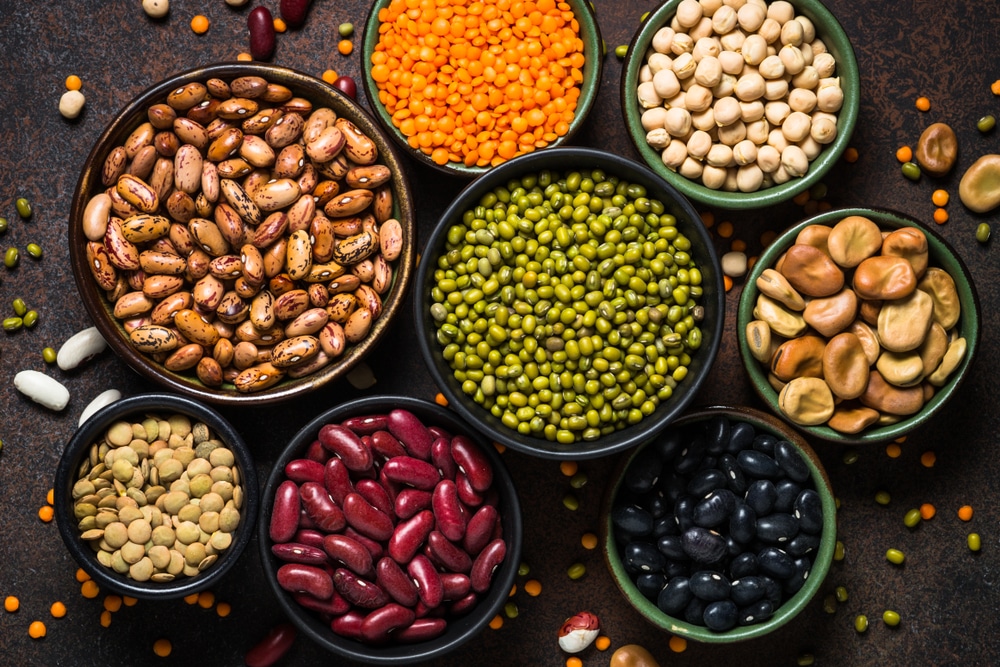
Legumes include beans, peas, and lentils. People living in Blue Zones are their biggest fans! Buettner’s research found that people living in Blue Zones consume at least four times as many legumes as most places in America. People living in Nicoya love black beans; Okinawans prefer soybeans; and residents of Ikaria cite garbanzo beans, lentils, and black-eyed peas as favorites.
Legumes are highly nutrient-dense and a form of complex carbohydrate, meaning they give you a slow and steady dose of energy instead of the crash-and-burn you get from refined carbohydrates. Naturally rich in fiber and protein, legumes fill you up and keep your digestive habits regular, as fiber is often referred to with a wink as “nature’s broom.”
Aside from Buettner’s research, multiple studies point to legumes as a major longevity booster, so load up on them when you can!
3. Shiitake Mushrooms

This mighty mushroom is one of the most popular in the world, but it’s praised extra-highly by residents of Okinawa, Japan, who often add them to delicious miso soup or stir-fries. Long-heralded in Asian countries for their powerful medicinal qualities, Shiitake mushrooms are said to help lower cholesterol and contain antiviral and even anti-cancer properties.
You can consume them raw or cooked, add them to stews and salads, top them on your favorite steak, or even add them to a homemade flatbread. However you add Shiitake mushrooms to your diet, you can take pride in knowing they pack more than 100 different compounds containing immune-protecting properties.
4. Nuts
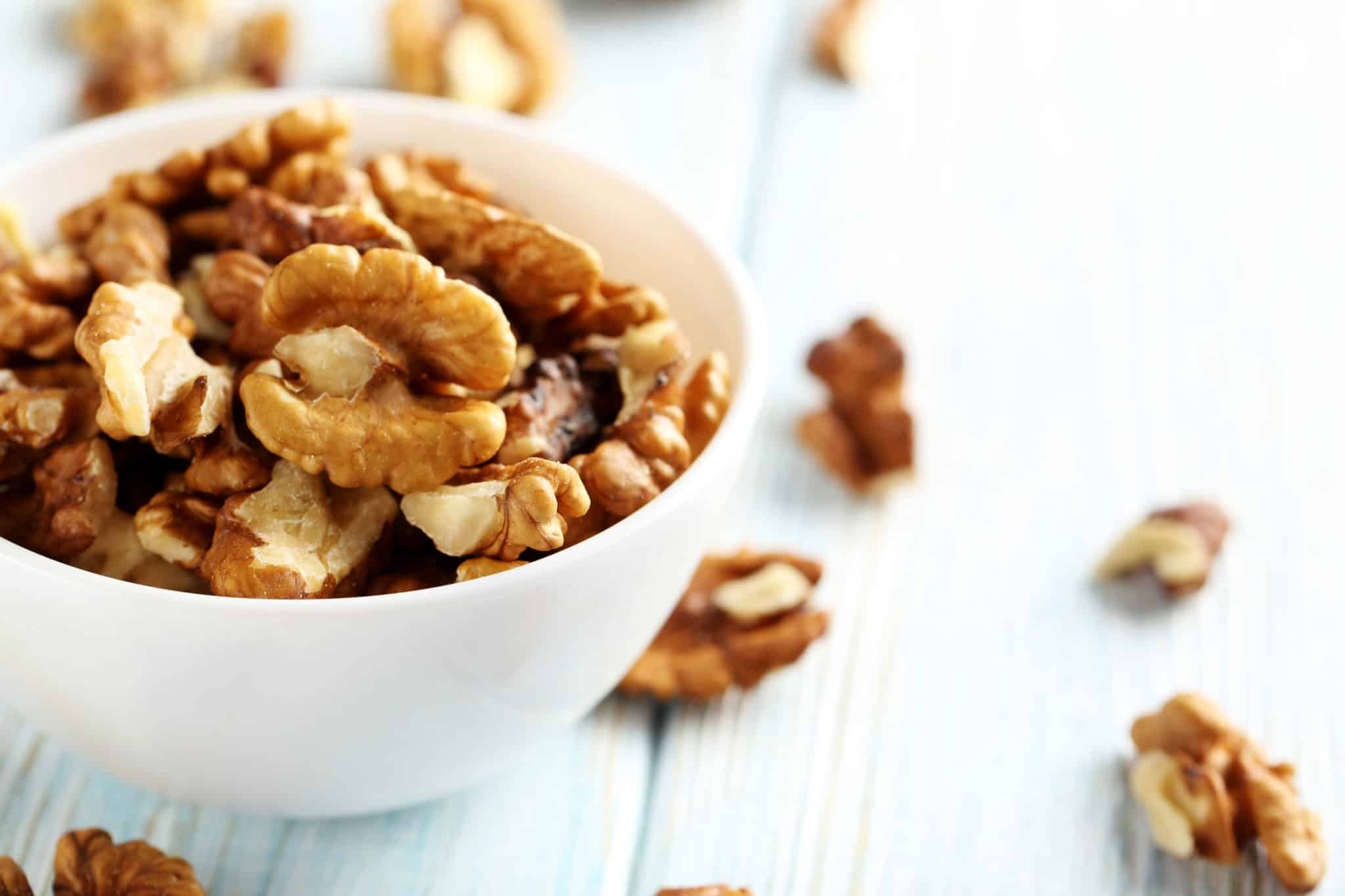
Nuts are one of the most overlooked yet convenient superfoods. Nuts are full of healthy fats and an excellent source of protein. They’re also packed with vitamins and minerals your body needs, like magnesium, folate, vitamin E, and selenium.
Buettner found that Blue Zone residents usually eat about 1-2 handfuls of nuts per day. So aside from sprinkling them on salads or adding them to your granola, you can also enjoy a handful or two throughout the day as a snack. Choose from almonds, pistachios, walnuts, Brazil nuts, peanuts, and cashews.
5. Sweet Potatoes

Sweet potatoes are a staple of the Okinawan diet. Although their sweet potatoes actually have purple flesh on the inside, all colors deliver significant nutritional value.
Sweet potatoes contain high amounts of B vitamins and are full of fiber. They’re also an unparalleled source of beta-carotene, which your body converts to the much-needed Vitamin A. This is beneficial because vitamin A helps all your major organs function and also assists your immune and reproductive systems.
The edible peel of the sweet potato is also rich in antioxidants, with some studies even suggesting it has potential cancer-preventing properties. Swap your next dinner side for sweet potato or dice and cube some to mix in with scrambled eggs. We also like to make sweet potato toast topped with other healthy ingredients like avocado.
6. Whole Grains
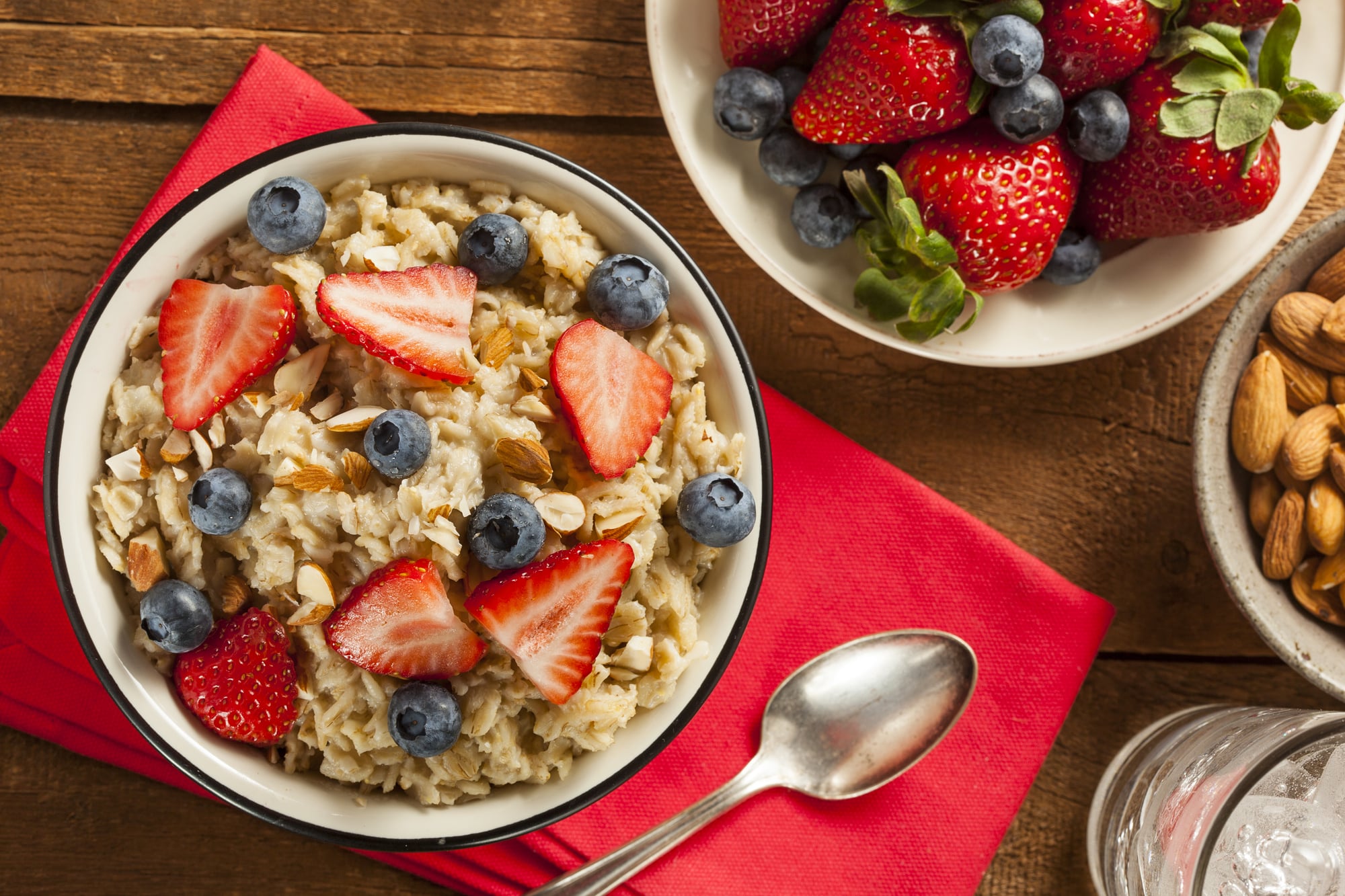
Across the globe, Blue Zone residents are busy eating whole grains such as oats, barley, brown rice, and ground corn. These whole grains supply your body with energy and help stave off disease.
A recent study published in BMJ suggests that eating whole grains can help reduce your risk of heart disease, diabetes, cancer, and other ailments. To get more whole grains in your diet, start your day with steel-cut oatmeal or even add a little brown rice to your breakfast.
7. Fruits and Vegetables

Aside from whole grains, fruits and vegetables are also technically considered carbohydrates. Buettner’s research found that, on average, Blue Zone residents had a diet that was 65% carbohydrates—meaning the world’s oldest people are eating mostly fruits, veggies, and whole grains. This isn’t necessarily breaking news, but it is a good reminder that fruits and vegetables are always a healthy choice.
Some people get hung up on the natural sugar found in carrots or berries, but here’s the truth: natural sugar is not the same as fake sugar, and we’ve never met someone who became sick or obese from loading up on produce. Blue Zone residents know this, too, and they’re busy eating antioxidant-rich berries and grapes, carrots, bitter melon, lemons, and more.
8. Fish
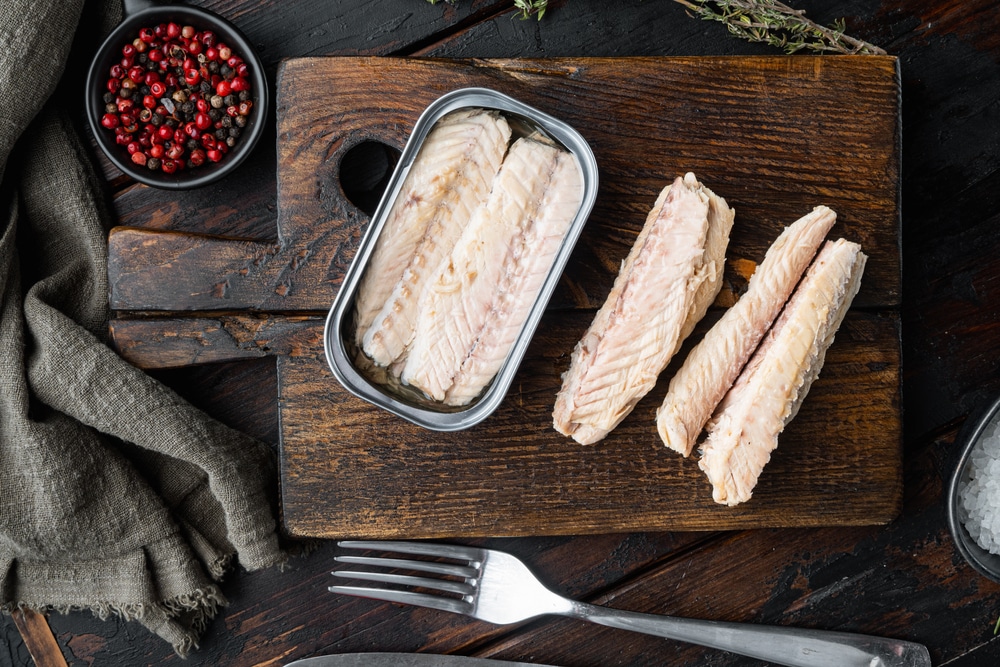
Many Blue Zone residents consider themselves pescatarians, meaning they don’t eat red meat but will stick with the occasional small serving of fish.
When they do eat fish, they consume roughly three ounces (picture a deck of cards for size) and typically choose smaller fish like sardines, anchovies, trout, or grouper. These fish provide tons of omega-3 fatty acids, can boost heart health, and are an excellent source of protein.
If you can’t quite get over the taste of anchovies, though, never fear. Choosing other types—like salmon—will still deliver plenty of heart-healthy fats and nutrients.
9. Olive Oil
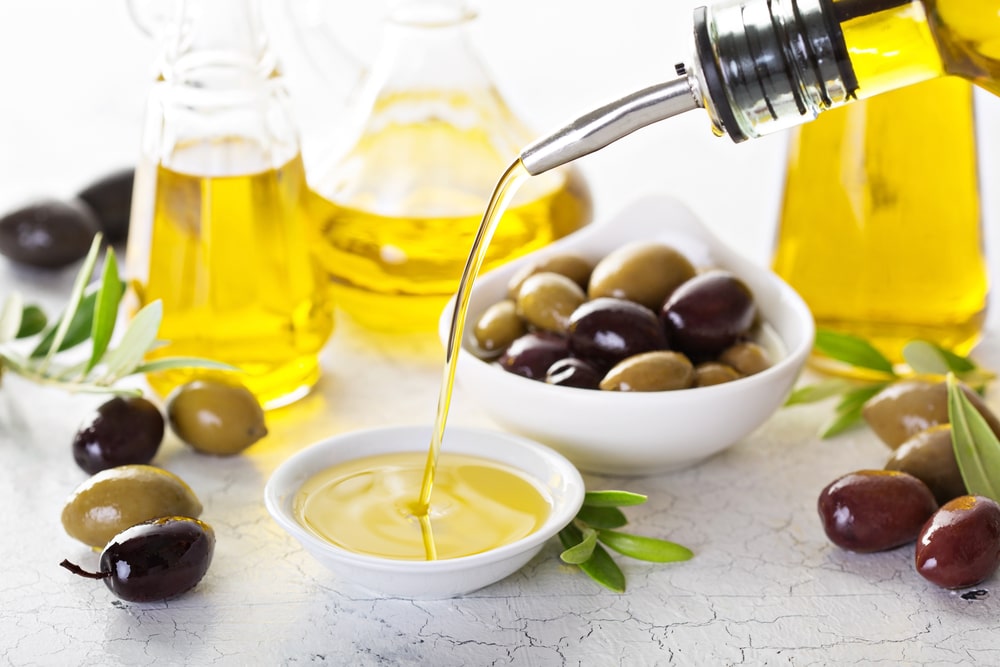
If you’re familiar with the Mediterranean diet, it shouldn’t surprise you that residents of Ikaria, Greece, love olive oil and other healthy fats!
Olive oil is one of the only plant-derived cooking oils and is full of cholesterol-lowering monounsaturated fats. It also contains polyphenols, which help reduce the oxidative stress within your body. (Over time, oxidative stress from fried foods, smoke, pollution, and other factors can increase your cancer risk.)
The next time you’re preparing a meal, try switching from vegetable or another oil to olive oil. If it’s good enough for people who live past 100, it’s good enough for us!
21 Healthy Quinoa Recipes You’ll Want to Make ASAP

On the hunt for the best quinoa recipes? We don’t blame you! Quinoa—an edible seed and plant-based protein—is known for being a nutritional powerhouse and easy to incorporate into any meal needing a healthy boost.
Check out our favorite quinoa recipes that are so delicious, you’ll forget how healthy they are!
21 Healthy Quinoa Recipes You’ll Want to Make ASAP
14 Health Benefits of Cucumbers (And a Few Refreshing Recipes)
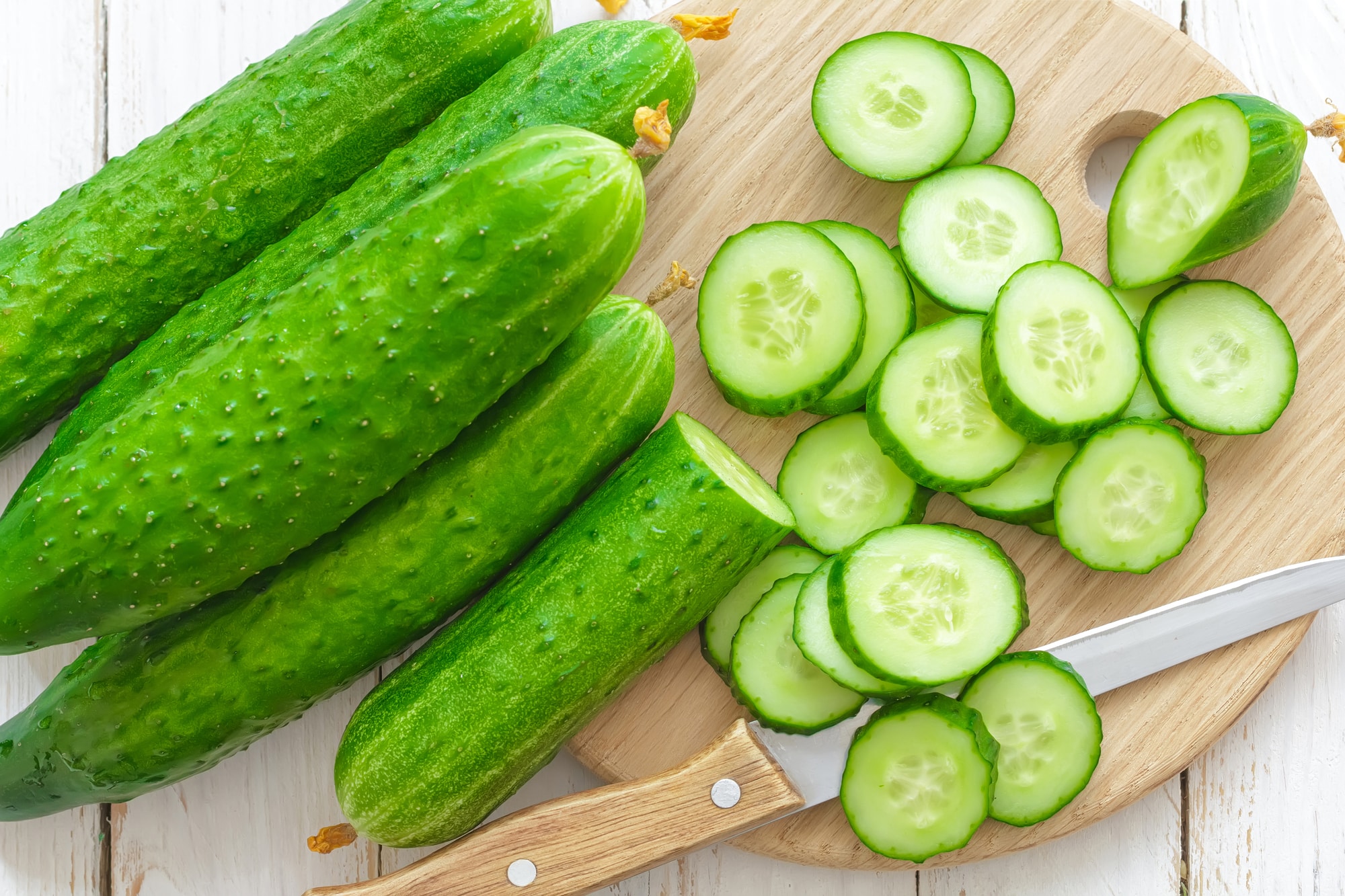
From healthy skin to improved memory, check out the top 14 health benefits of cucumbers!
And if you’re lucky enough to have a load from your garden or farmers market on hand, you’ll definitely want to check out some of our favorite cucumber recipes, too.
14 Health Benefits of Cucumbers (And a Few Refreshing Recipes)
5 Powerful Health Benefits of Artichokes (+ 7 Yummy Recipes!)
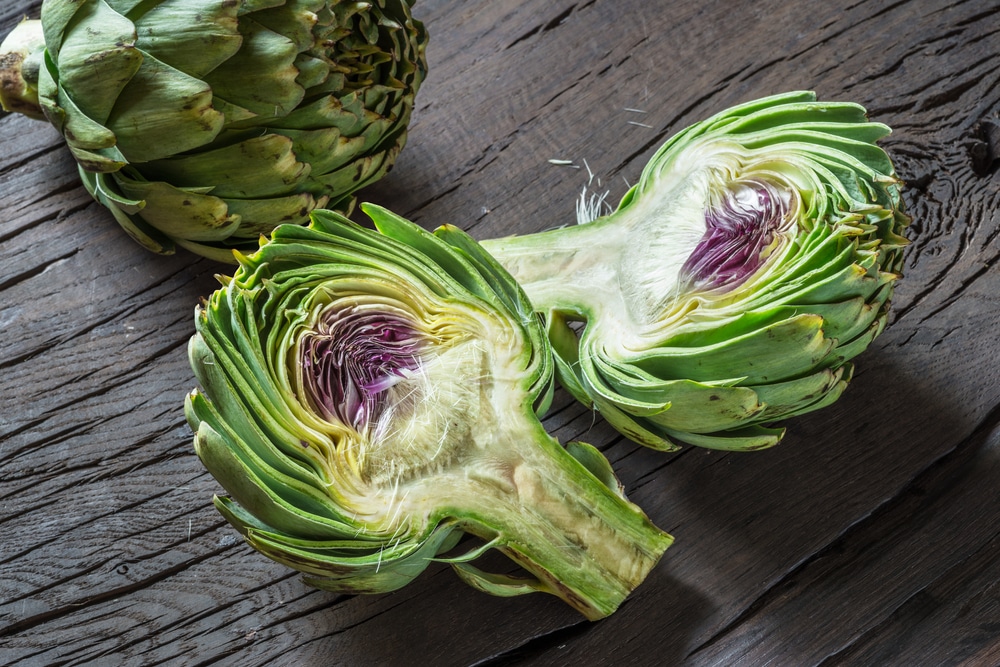
Whether you’re looking for a reason to add artichokes to your diet once and for all or just another reason to keep eating them, you’ll definitely want to check out their best health benefits!
Plus, we’ve added some delightful recipes to try.
5 Powerful Health Benefits of Artichokes (+ 7 Yummy Recipes!)
What's Your Reaction?




















